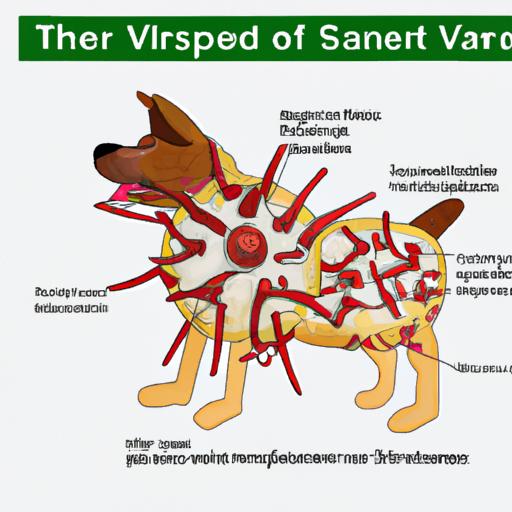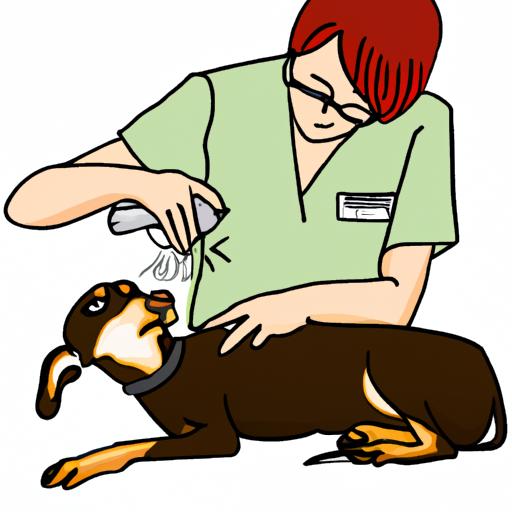
Canine Distemper: Understanding a Serious Viral Infection
Learn about Canine Distemper: Understanding a Serious Viral Infection. Discover the causes, symptoms, transmission, and prevention methods. Protect your furry friend!
Introduction
When it comes to the health and well-being of our furry friends, it’s important to be aware of the potential risks they may face. One such risk is Canine Distemper, a serious viral infection that affects dogs worldwide. Understanding the nature of this infection is crucial for dog owners and lovers alike. In this article, we will delve into the ins and outs of Canine Distemper, exploring its causes, symptoms, transmission, and prevention methods. Let’s embark on this journey of knowledge to better protect our canine companions.

Understanding Canine Distemper
Definition and Causes of Canine Distemper
Canine Distemper is a highly contagious viral disease caused by the canine distemper virus (CDV). This virus primarily affects dogs but can also affect other animals such as foxes, wolves, raccoons, and ferrets. The virus is characterized by its ability to attack multiple organ systems, including the respiratory, gastrointestinal, and nervous systems.
Symptoms and Progression of the Viral Infection
Identifying the symptoms of Canine Distemper is crucial for early detection and timely treatment. The initial symptoms may resemble those of a common cold, including fever, coughing, and nasal discharge. However, as the infection progresses, more severe symptoms may arise, such as vomiting, diarrhea, lethargy, and neurological issues like seizures and muscle twitching. It’s important to note that the severity of symptoms can vary from case to case.
How the Virus Spreads Among Dogs
Canine Distemper is primarily transmitted through respiratory secretions, such as coughing or sneezing, from infected dogs. The virus can also be spread indirectly through shared food and water bowls, bedding, and other objects contaminated with the virus. Puppies and unvaccinated dogs are particularly susceptible to contracting the infection.
Risk Factors and Susceptible Dog Breeds
While Canine Distemper can affect dogs of any breed, certain breeds are more susceptible to the virus due to genetic factors or compromised immune systems. Breeds such as Siberian Huskies, German Shepherds, Rottweilers, and English Springer Spaniels are known to have an increased risk of contracting the infection. Additionally, dogs living in high-density areas, such as shelters or boarding facilities, are more prone to exposure to the virus.
Frequently Asked Questions (FAQ)
What are the common signs of Canine Distemper?
The common signs of Canine Distemper include fever, coughing, nasal discharge, vomiting, diarrhea, loss of appetite, lethargy, and neurological symptoms like seizures. It’s essential to consult a veterinarian if you notice any of these symptoms in your dog.
Can Canine Distemper be transmitted to humans?
No, Canine Distemper cannot be transmitted to humans. It is a disease that exclusively affects dogs and other animals mentioned earlier. However, it is highly contagious among dogs, so proper precautions should be taken to prevent its spread.
Is there a cure for Canine Distemper?
Unfortunately, there is no specific cure for Canine Distemper. Treatment mainly focuses on managing symptoms, supporting the dog’s immune system, and preventing secondary infections. Vaccination is the best way to prevent the disease.
How can Canine Distemper be prevented?
Prevention is key when it comes to Canine Distemper. The most effective preventive measure is vaccination. Puppies should receive a series of vaccinations starting at an early age, followed by regular boosters throughout their lives. It’s also important to minimize exposure to infected dogs and maintain good hygiene practices, such as regular cleaning of food and water bowls and disinfection of living areas.
Conclusion
In conclusion, Canine Distemper is a serious viral infection that poses a significant threat to our beloved dogs. By understanding the causes, symptoms, transmission methods, and prevention strategies associated with this disease, we can take proactive steps to safeguard the health and well-being of our furry companions. Early detection, proper treatment, and responsible pet ownership, including regular vaccinations, are vital in keeping our dogs safe from this devastating infection. Remember, consult your veterinarian for personalized advice and guidance to ensure the best care for your furry friend.
Protect your dog from Canine Distemper – Start taking preventive measures today!




























